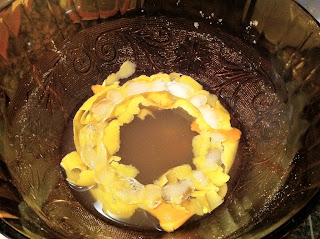THE NEGRONI
The key to a great Negroni is using a good quality sweet vermouth. I prefer the Carpano formulas available here in the U.S. ("Punt e Mes" and "Antica") but I also enjoy Cinzano rosso. There are some good choices out there so feel free to experiment. Most people agree though that the Carpano Antica in a Negroni is hard to beat.
Whatever your choice, you can vastly improve any vermouth's shelf life by keeping them refrigerated and using smaller bottles whenever you can.
I wouldn't necessarily call this a benchmark drink for gin tasting, but it's close. One thing I am certain of is that a good gin doesn't have to be expensive, especially for mixing cocktails.
The old guard premiums that flourished before gins tried to compete with vodkas and be "ultra smooth" tend to excel. I prefer a quality, strong flavored gin like Bombay Dry or Beefeater regular over say a Bombay sapphire in most mixed drinks.
Using smoother gins like Plymouth can still be good, but they end up playing more of a supporting role to the Campari and vermouth rather than providing the structure and balance that the stronger flavored gins can provide.
You can serve this one "up" or on the rocks. If you're feeling lazy, you can build it right in the glass. The dilution and extra chilling that the mixing glass treatment provides is well worth the extra effort (as usual).
An orange twist provides the perfect garnish. When I serve over the rocks I may just zest some oils from the orange over the top of the finished drink rather than providing a full garnish, especially if I am making this for myself and not a guest, or skip altogether,
 |
| Beefeater Negroni "up" |
THE RECIPE
INGREDIENTS
1.5 oz gin (preferably a strong flavored London dry like Bombay Dry or Beefeater)
1 oz Campari
1 oz sweet vermouth (use Punt e Mes or Carpano Antica if you can find them)
INSTRUCTIONS
Pour ingredients into a mixing glass half filled with ice, mix well and strain into a cocktail glass or over fresh ice in an old-fashioned glass
Garnish with orange twist
One of the many delicious Negroni variations created over the years...
NEGRONI TREDICI
(recipe adapted from Toby Malony, The Violet Hour 2009)
 |
| Negroni Tredici...an all-star cast. |
INGREDIENTS
2 oz gin
1 oz sweet vermouth
.5 oz Cynar
.5 oz Campari
.5 bar spoon Regan's orange bitters
































